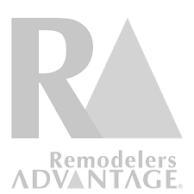Are Permits Required To Renovate a Historic House in Charlotte, NC?
Charlotte residents love living in a city with a mix of historical and modern design. The city’s neighborhoods include eight historic districts with various architectural styles and landscaping. These areas have regulatory protection to ensure their preservation.
If you live in one of Charlotte’s many historic homes, you probably cherish its unique characteristics and charms. But you also might want to integrate modern amenities and technologies to make your house your dream home.
Historic home renovation maintains architectural details while enriching living spaces with contemporary conveniences and improvements. An experienced design/build company like DiFabion Remodeling can help you do just that.
What Areas of Charlotte Are Considered Historic?
Here’s a general overview of Charlotte’s designated historic districts.
- Dilworth has been one of Charlotte’s most distinctive neighborhoods since the 1890s. It’s considered the city’s first suburb, and its homes sit close to the street on long and narrow lots.
- Fourth Ward was a prosperous residential area in the 1850s, but by the 1970s, many of its Victorian homes had been demolished or converted for other uses. Today, restored homes can be found between West 7th Street, North Graham Street, West 10th Street, and North Church Street.
- Hermitage Court was founded in 1911 on Charlotte’s south side. The architecture here is an eclectic mix, with bungalow-style houses interspersed with Colonial and Tudor Revival homes.
- Plaza Midwood was developed in the 1910s and ’20s and is considered Charlotte’s most eclectic historic neighborhood. Properties on the Plaza feature larger lots and homes, while secondary streets have a modest mix of bungalows, cottages, and American Small Houses.
- Wesley Heights is Charlotte’s first west-side historic district and appears much like it did in the 1920s. It’s home to many Craftsman, bungalow, Colonial, Tudor, and American Small House properties.
- Wilmore was developed as a streetcar suburb in the early 1900s. Its development pattern is similar to Dilworth, with a mix of cottage-, bungalow-, and American Small House-type dwellings.
- Oaklawn Park was developed between 1955 and 1961. Houses here are typically unpainted red brick with wood gables, metal porch columns, and double-hung windows.
- McCrorey Heights is one of Charlotte’s most historically significant neighborhoods. The predominant architectural form is one-story brick ranch houses with stone accents.
Do I Need Permission To Remodel a Historic Home in Charlotte?
Most historic districts have strict rules and zoning laws governing what can and can’t be done to an older home. In Charlotte, some changes require administrative approval, while other requests must go through the Historic District Commission (HDC). For instance:
- Administrative approval is typically given to projects like landscaping, window and door replacement, roof replacement, demolition of dilapidated accessory structures, and minor changes to shutters, gutters, accessibility features, and porch rails.
- Referral to the HDC is required for any new full construction, additions taller or wider than the existing structure, additions that increase the property’s square footage by more than 50%, and enclosures of existing porches. Other projects that need HDC review include non-traditional exterior materials, new roofing materials, and chimney removal.
These and other design standards ensure homeowners respect their property’s historic features and give contractors much-needed guidance before drawing up plans. They also protect current property values and increase public awareness about the city’s vision for the district.
Do I Need a Building Permit To Remodel a Home in Charlotte?
In most cases, the answer is yes. While some work, like repairing non-load bearing components, replacing windows and doors, or repairing and replacing appliances, doesn’t require a permit, other work does, including:
- Constructing decks, carpets, and garages of any size
- Room additions or turning an unfinished attic into a living space
- Modifying, replacing, or relocating the plumbing system, furnaces, and light fixtures
- Kitchen cabinet replacements that change the room’s configuration or exceed $20,000
- Structural repairs to sub-floors, floor joists, headers, piers, footing, and roof sheathing
The good news is your remodeling company can help obtain any necessary permits and ensure you comply with local and state building requirements.
Factors To Consider When Remodeling a Historic Home
Renovating a historic home is a wonderful opportunity to preserve and celebrate the past while breathing new life and functionality into the space. However, without proper planning, the process can quickly become more stressful than it needs to be.
Here’s what to consider before getting started:
- Schedule a consultation with a design/build company with experience renovating historic homes: They understand the hidden problems older homes often have, including structural, plumbing, electrical, and foundation problems. They also know where to look for water damage and toxic building materials like asbestos.
- Learn as much as you can about the history of your home: Many homeowners who invest in historic homes keep meticulous records and blueprints about the property. Has the property been modified in the past? If so, do you want to restore it to its original structure or go in a different direction?
- Everyone’s idea of a dream home is different: What do you envision for your property? Do you want to modernize the bathrooms but keep the living and dining rooms as is? Do you want to remodel exterior features, add on a sunroom, or build a new porch or patio?
- Decide which historical features you want to keep or remove: Many homeowners want to restore and refinish structural elements but replace plumbing, wiring, and damaged materials. Also, think about whether you want to modify the existing floor plan.
- Be prepared for the unexpected: Most historic renovations come with surprises that reveal themselves during the process. The most common are foundation issues, wood rot, odd electrical and plumbing layouts, and insufficient insulation and ventilation. You might also discover previous modifications that were made without a permit.
Schedule a Remodeling Consultation
An award-winning design/build company like DiFabion Remodeling is the best choice for renovating an older home. Our in-house design and construction teams ensure your vision is consistently implemented throughout the project and there’s better alignment between your preferences and budget.
DiFabion was founded in 2000, and our local team always aims to exceed our client’s expectations in every way. We have a comprehensive process and are well-versed in the region’s legal and zoning requirements to ensure a job well done.
We’ve done enough historic home remodels to know the satisfaction you feel when all’s said and done. We’ll help you reimagine your existing living space and turn your home into one you’ve always dreamed of!
Let’s Talk
Fill out our contact form to request a consultation with our team.
Sidebar
Award-Winning Design Projects
Over the past three decades, we have completed hundreds of home remodeling projects in the Greater Charlotte area and won numerous awards for our innovative designs and commitment to customer satisfaction. See All Projects



















